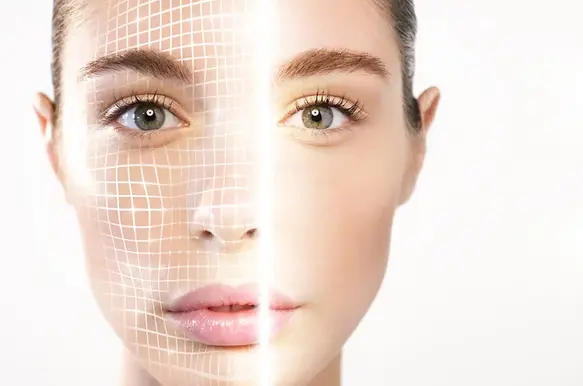RedLight Therapy
Red light therapy is a treatment that uses low-wavelength red or near-infrared light to promote healing, reduce inflammation, and improve skin and cellular health.

Red Light
Red light therapy works by penetrating the skin with specific wavelengths of red or near-infrared light (typically between 600–1000 nanometers). These wavelengths stimulate the mitochondria in your cells—the “powerhouses” responsible for energy production—helping cells repair themselves, produce more energy (ATP), and function more effectively.
It's commonly used for:
-
Skin improvement (reducing wrinkles, acne, scars)
-
Wound healing and tissue repair
-
Reducing joint pain and inflammation
-
Improving muscle recovery and performance
-
Alleviating symptoms of conditions like arthritis and psoriasis

Near Infrared Light
Near-infrared (NIR) light is a type of invisible light on the electromagnetic spectrum with wavelengths just beyond visible red light, typically ranging from 700 to 1200 nanometers (nm). While we can't see it with the naked eye, it can penetrate deeper into the body than visible light—reaching muscles, joints, and even bones.
In therapies like red light therapy, NIR light is used to:
-
Stimulate deeper tissue repair
-
Reduce inflammation
-
Improve blood flow
-
Relieve joint and muscle pain

Blue Light
Blue light therapy is a treatment that uses specific wavelengths of blue light (usually around 415–495 nanometers) to target and kill bacteria on the skin, particularly Propionibacterium acnes, which causes acne. It’s also used to treat certain skin conditions and mood disorders.
Common uses include:
-
Acne treatment (especially mild to moderate acne)
-
Skin rejuvenation
-
Sun damage and precancerous spots (like actinic keratosis)
-
Seasonal affective disorder (SAD) when used in broader-spectrum light boxes
Unlike red or near-infrared light, blue light doesn’t penetrate as deeply, so its effects are mostly limited to the surface layers of the skin.
How does RedLight affect the skin?
Red light (usually around 620–750 nm wavelength) penetrates the skin and stimulates biological processes in skin cells, especially in the mitochondria. This can lead to:
-
Improved Collagen Production
-
Red light boosts collagen synthesis, which helps reduce wrinkles and fine lines, improving skin elasticity and firmness.
-
-
Enhanced Wound Healing and Tissue Repair
-
Speeds up healing of cuts, scars, and post-procedure recovery.
-
-
Reduced Inflammation
-
Helps calm inflamed skin conditions like acne, rosacea, or eczema.
-
-
Better Skin Tone and Texture
-
Regular use may lead to smoother, more even-toned skin by promoting cell regeneration.
-
-
Improved Circulation
-
Red light enhances blood flow, which helps nutrients and oxygen reach the skin more effectively.
-



How does NIR affect the body?
Near-infrared (NIR) light affects the body by penetrating deep into tissues—far deeper than visible light—and stimulating cellular processes, especially in the mitochondria, the parts of cells that produce energy.
Here’s how it impacts the body:
-
Boosts Cellular Energy (ATP) Production
NIR light stimulates mitochondria to produce more ATP (adenosine triphosphate), which fuels cell repair and regeneration.
-
Reduces Inflammation
It lowers oxidative stress and cytokine levels, helping reduce chronic inflammation and swelling.
-
Enhances Blood Circulation
NIR promotes vasodilation (widening of blood vessels), improving oxygen and nutrient delivery to tissues.
-
Accelerates Healing
It supports faster recovery of muscles, tendons, and joints, making it popular among athletes and for physical therapy.
-
Pain Relief
By improving circulation and reducing inflammation, NIR light can help relieve chronic and acute pain.
-
Neuroprotective Effects
Some studies show it may support brain health by increasing blood flow and reducing neuroinflammation, with potential benefits for conditions like traumatic brain injury or cognitive decline.
How Blue Light affects the skin?
Blue light therapy affects the skin primarily by targeting and killing acne-causing bacteria and reducing oil production, making it especially effective for treating acne and certain skin conditions. Here’s how it works on the skin:
-
Kills Acne-Causing Bacteria
Blue light penetrates the top layers of skin and destroys Cutibacterium acnes (formerly Propionibacterium acnes), the bacteria that cause inflammation and breakouts.
-
Reduces Sebum (Oil) Production
It can help decrease oil production from sebaceous glands, which contributes to fewer clogged pores and less acne.
-
Anti-Inflammatory Effects
Blue light can calm inflamed skin and reduce redness, making it helpful for active acne and some mild inflammatory skin issues.
-
Helps Treat Actinic Keratosis and Sun Damage
When combined with a photosensitizing agent (as in photodynamic therapy), it can target and treat precancerous skin lesions.
-
Minimally Invasive and Drug-Free
It’s non-invasive, usually painless, and doesn’t require harsh chemicals, making it a good option for sensitive or acne-prone skin.




